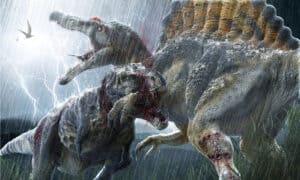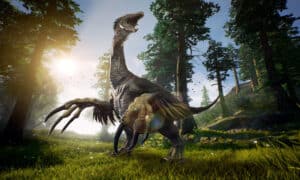The words “raptor” and “Velociraptor” make some people imagine monstrous dinosaurs taller than them with claws bigger than their fingers ready to tear them apart. However, the word raptor, when not part of a longer name, has a specific meaning in the modern world that differs from the ancient past. That’s why we’re going to spend some time picking apart the meanings behind raptor vs velociraptor.
Learn how these terms were applied in the past and how they are used today. Learn the truth about Velociraptors!
Dispelling the Myth of the Velociraptor

This is not what a Velociraptor looked like, in truth it was the more the size of a turkey.
©kamomeen/Shutterstock.com
The Velociraptor achieved an unfair level of fame and fear due to the film Jurassic Park. In this movie, the Velociraptor was portrayed as a 6-foot scaly dinosaur that coordinated to hunt down humans and other dinosaurs. However, that’s not remotely true.
In truth, the Velociraptor is only about the size of a turkey. While it was probably a very deadly creature to animals its size or smaller, it was not hunting down T-rex in packs or anything like that. Furthermore, it seems rather certain that this dinosaur had feathers.
While we’re on the subject of fictional portrayals, there is no way that this would win any ground against Indominus Rex. Thus, the raptors from the movies are very different than those in real life.
What Do We Mean by Raptor?
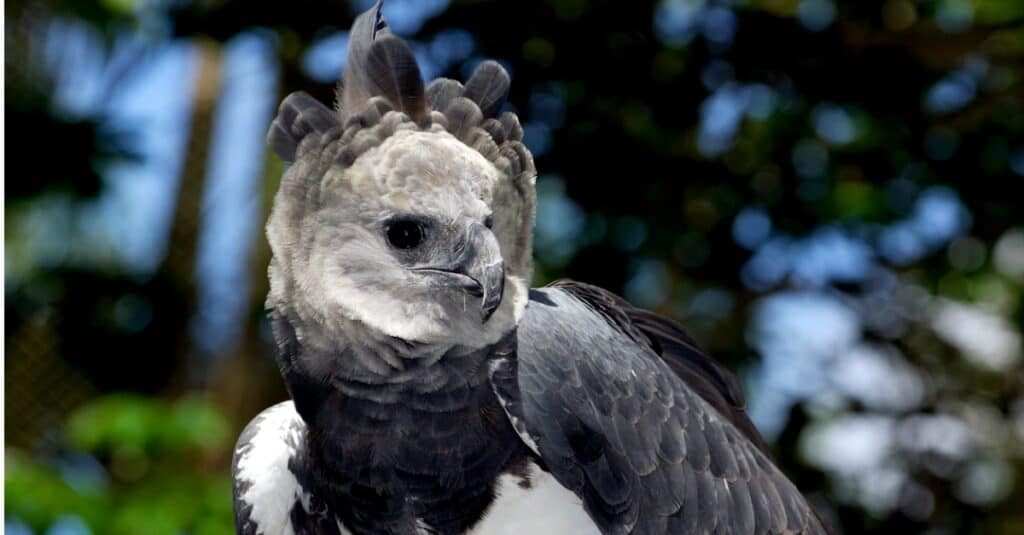
Harpy
eagles
are raptors in the modern sense.
©Alfredo Maiquez/Shutterstock.com
There are two ways that we can look at the term raptor. In the present day, the word refers to birds of prey, like eagles, hawks, and falcons. These birds all hunt other animals, use their claws to grasp and kill their prey, and have curved beaks.
Dinosaurs called raptors are often those from the Dromaeosauridae family. These dinosaurs got the name raptor because they probably feasted on carrion after larger dinosaurs killed them. Interestingly, these dinosaurs most likely had feathers, too.
This family of dinosaurs varied quite a bit in terms of size. For example, the Utahraptor was significantly larger than the Velociraptor. The Utahraptor weighed up to 1,100 pounds, stood 6 feet tall overall, and measured about 20 feet long or more! This was the real dinosaur that could terrorize people in tall grass.
Raptor vs Velociraptor: What Are the Differences?
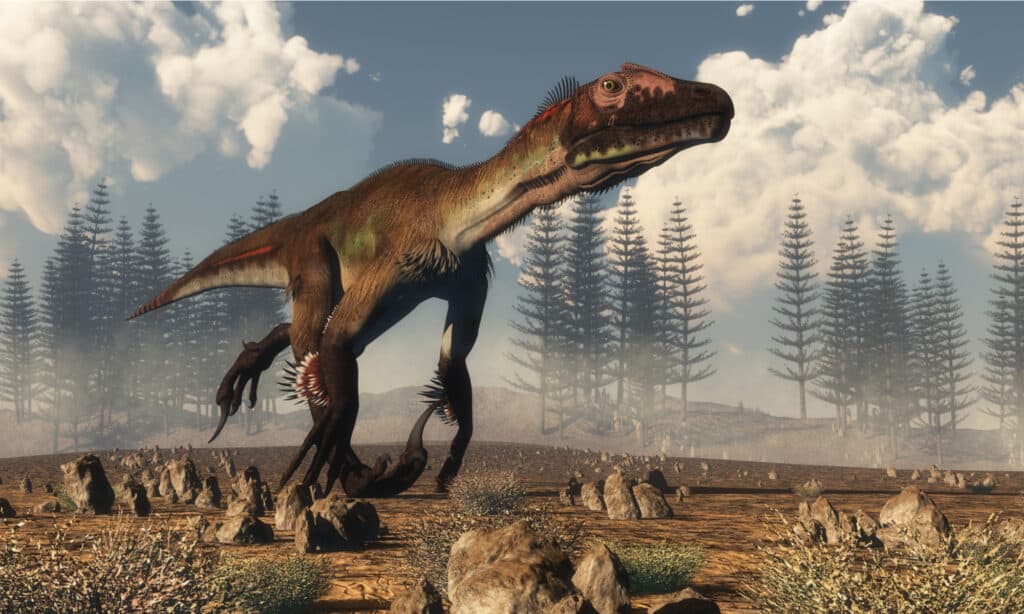
Utahraptor is called a raptor.
©Elenarts/Shutterstock.com
The greatest differences between a raptor and vs Velociraptor include the specificity of the term and the size of the creatures that fall under those terms. The word Velociraptor can only refer to a specific dinosaur genus with two species, both of which had an upper size of 50 lbs and 2.5 ft tall, but raptor can refer to the Dromaeosauridae at large as well as birds of prey in the modern-day.
With that in mind, let’s take a look at some of the different types of animals that have been called raptors in the past and present.
Comparing a Raptor vs Velociraptor vs Utahraptor
Image needed: harpy eagle, velociraptor, Utahraptor
Let’s take some time to really drive home the concept of how a raptor vs velociraptor differs. In this case, the best thing to do is to find a modern incarnation of the raptor and compare it to the velociraptor as well as another species of “raptor” that existed in the past. With this information, you’ll see the major differences and similarities between these creatures.
| Harpy Eagle | Utahraptor | Velociraptor | |
|---|---|---|---|
| Size | Height: 35-40 inches Weight: 11-20 pounds | Weight: 700lbs-1,100lbs Height: 4.9ft at the hips, 6ft overall Length: 16ft-23ft | Weight: 20lbs-33lbs, perhaps up to 50lbs Height: 1.5-2.5ft tall overall Length: 4.5ft-6.5ft |
| Speed and Movement Type | – 50 mph in a dive | – 15-20 mph | – 10-24 mph – Bipedal striding |
| Defenses | – Speed – Flight – High senses | – Large size – Keen instincts – Agility | – Speed – Agility |
| Offensive Capabilities | – Large, sharp talons – Sharp beak – Speed – Great senses of sight and hearing | – Could kick and slash with sickle-shaped claws measuring between 8in and 9in long – Probably used its hand claws and bites to kill prey after wounding them | – 3-inch claw on the second toe of each foot – Swift, agile attacker that could grasp prey and then attack with kicks – 28 teeth serrated on the back edge – Attacked by leaping at and pinning prey, finishing them shortly after |
| Predatory Behavior | – Solitary ambush predator | – May have been pack hunters – Ambush hunters that made up for their relatively slow speed with cunning | – Hunted alone rather than in packs as portrayed in the films – Attempted to cut the vital neck areas of prey |
Raptors in the past and present had deadly claws or talons. These structures allow raptors of all sorts to grasp their prey, hold it in place, and kill it.
Raptor vs Velociraptor: Who Would Win in a Fight?
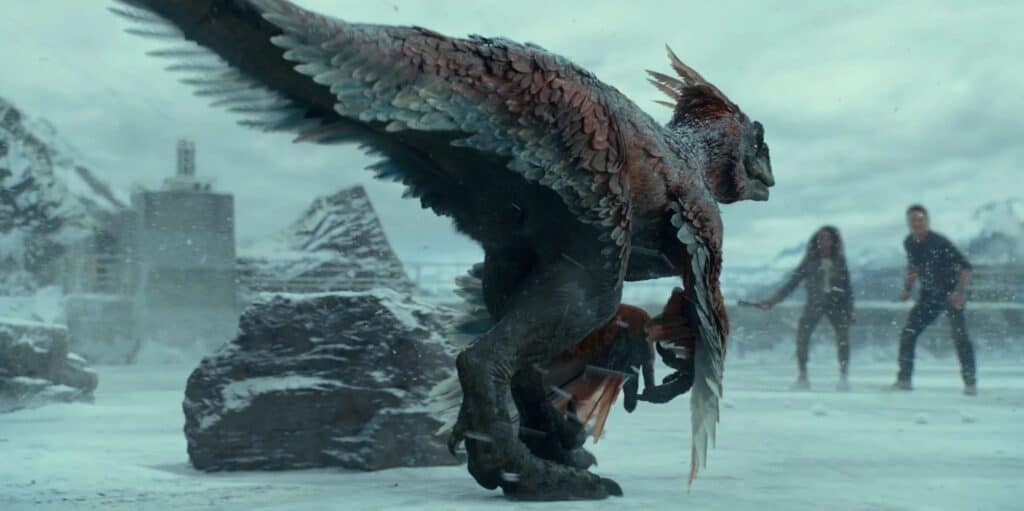
A raptor would win a fight against a Velociraptor, depending on the definition that we use. A fight between a Velociraptor and a Utahraptor would end in favor of the latter. The Utahraptor is far larger than the Velociraptor, and it would easily chase it down, hold it down, and finish it off with a series of devastating bites.
The smaller dinosaur might have a chance to land scratches on the larger dinosaur if it is lucky, but it would probably turn tail and run from the larger one to save its life.
The other matchup in this series would be a raptor bird vs a Velociraptor. In this case, it depends on the bird. Some of the largest raptors in the world manage to attack and kill prey by dropping it off cliffs or by using their immense speed and power to slam into prey.
In the case of a very large raptor bird, like a harpy eagle, it could probably kill a velociraptor if it landed the first strike. After all, an attack from the air could be a significant opening and end to the fight.
Still, if the battle took place on the ground, then the dinosaur would probably secure a quick meal.
Up Next
- What Do Dinosaurs Eat?
- Discover the Ancient Predator that Came Before the Velociraptor
- Velociraptor vs. Indominus Rex
The photo featured at the top of this post is © SciePro/Shutterstock.com
FAQs (Frequently Asked Questions)
What was the size of the velociraptor?
the Velociraptor is only about the size of a turkey. While it was probably a very deadly creature to animals its size or smaller, it was not hunting down T-rex in packs or anything like that. Furthermore, it seems rather certain that this dinosaur had feathers.
What does it mean to be called a “raptor?”
Dinosaurs called raptors are often those from the Dromaeosauridae family. These dinosaurs got the name raptor because they probably feasted on carrion after larger dinosaurs killed them. Interestingly, these dinosaurs most likely had feathers, too.
Thank you for reading! Have some feedback for us? Contact the AZ Animals editorial team.



